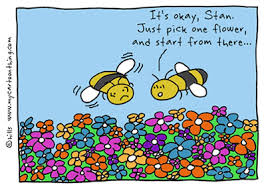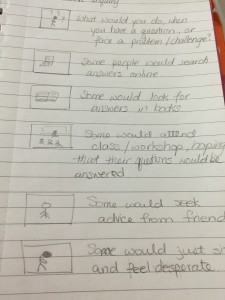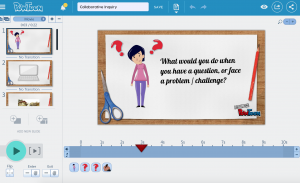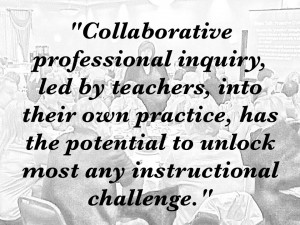The process of inquiry and the composing of blog posts have been a challenging, yet fruitful journey of learning for me. It is a challenging because I am currently not, and have never been a teacher-librarian. I have learned a great deal of new ideas through reading others’ blogs or scholar articles. However, they stay at the knowledge level as I could not put them into practice. There is always a teacher-librarian at my school who I only meet once at the beginning of the year. As we are both part-time at the school, our days of work do not coincide. I am eager to put my learning into practice, but I have to be caution that I do not “step on someone’s toes”.
On the other hand, as I had mentioned above, I learned a lot from others’ blog posts and from the readings during my inquiry process. It is time to reflect and summarize my learning for the past couple of weeks.
Fostering reading culture at school
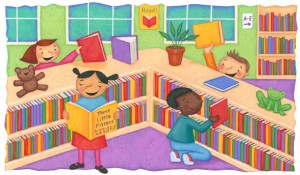
Photo in courtesy of http://theharriedmom.com/tag/reading/page/2/
“Drop Everything and Read,” hidden prized in library books, rewards for reading program, creative catalog system and signage are all useful and practical ideas that I have learned to foster students’ reading at school. My takeaway from this inquiry is that the methods we use is not a matter to our students, it’s the interpersonal relationship that matters. It is important for students to feel that we are interested in what they are reading. Even a simple conversation on the content of their reading would spark their interests in reading more and share more with you.

Photo in courtesy of https://readingstrategiesthatwork.wikispaces.com/Putting+the+Pieces+Together
When I have my first assignment as a teacher-librarian, I would like to start up a reading club at lunch and school reading club blog using Blogspot or Edmodo. My goal is to provide a platform for students to share their reading, as well as a way for me to know what my students are reading.
Building personal learning network
Personal learning network (PLN) is a new vocabulary that I have learned in the inquiry process. My colleagues and I would share our ideas or teach collaboratively. I also connect with colleagues from my previous schools via social media such as Facebook and Twitter. I did not realize until recently that I have been building my PLN through socializing with colleagues after school as well as connecting with others using social media. During this phase of inquiry, I experienced ideas sharing through blog posts, and was introduced to Digg which I think is an awesome tool helping me in organizing the blogs that I am interested in and would like to be notified when there is a new post. As I reflected on my work during the last few weeks, I realized that I started this phase of learning with active participation in commenting others’ blog posts. Unfortunately, I was not consistent in my participation and soon was back to my “old self” – silently reading others’ blog posts without leaving a comment. I will continue to push myself out of my comfort zone of being an “observant,” and participate more actively in discussions on blogs or social media.
Being an educational leader
I am always anxious in being a leader, especially an educational leader. I always question myself and consider others’ ideas are better than mine. I am an novice in information communication technology (ICT) and mostly like is the one who need help from others instead of providing help to others. However, I learned from my own inquiry and others’ sharing in their blog posts, being a leader does not mean you have to be an expert on everything. A leader would have a good interpersonal relationship with other staffs at the school, an awareness of the needs of the others and would be able to provide recommendation of resources that would fulfil the needs of others. Moving forward, I would be more aware of colleagues’ work in their classes and provide suggestion of possible resources, such as iPad apps or printed resources, that would enhance learning. Moreover, I plan to join the professional development committee and help in planning school-wide professional development event. I would be more aware of professional development opportunities outside of school, such as local conferences or online resources, and make recommendations to other staffs at school. I would take small steps at a time and work towards being an educational leader.
Mobile devices use in developing literacies in developing nations
I was amazed in discovering how people in developing nations could learn literacy through the use of mobile devices. The mobile devices allow people to get access to English resources, but also resources in their mother language which are rare find in printed format. Through inquiry process, I could concluded that most organizations, whose goal is to develop libraries in developing nations, encourages the use of mobile devices. In the meanwhile, in our school communities, educators are concerning privacy issues with the use of mobile devices. Furthermore, educators might question or worry that technology might replace our practice of teaching, and eventually, students would learn independently with the use of mobile device rather than from a teacher. While I was composing this blog post, a colleague of mine shared a blog post titled “Will technology replace teachers?” on Facebook. The photo below basically provides the answer to the question.

Photo in courtesy of http://www.coolcatteacher.com/category/education/teaching/
This marks the end of the phase 2 of my inquiry learning. As we move into the next module in which we will be sharing our “Vision of the future” project, my goal is to be a more active participant in commenting on others’ blog posts, as well as responding to others’ comments on my own blog posts. I believe that I would learn more through discussions with my fellow classmates in my group.

